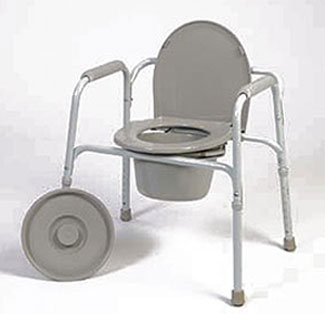Risks of Falling
A fall can lead to serious injury. Know the reasons why the person you care for is at risk for falling. A person might have more than one risk. By knowing a person’s risks, you can take steps to help them move about safely and make their home safe.
Ways to Help When You Know the Risks
If the person you care for is at risk for falling, take action. If the person likes to help himself or herself, then he or she may be less likely to ask for your help. So, think ahead.

Portable Bedside Commode